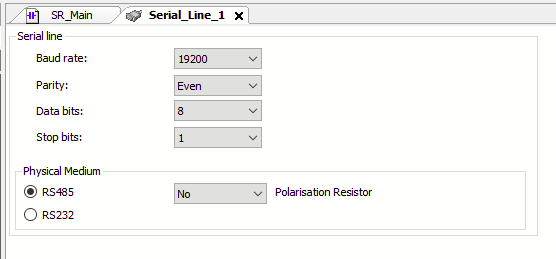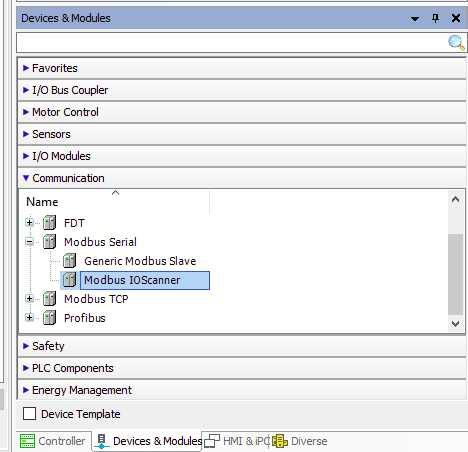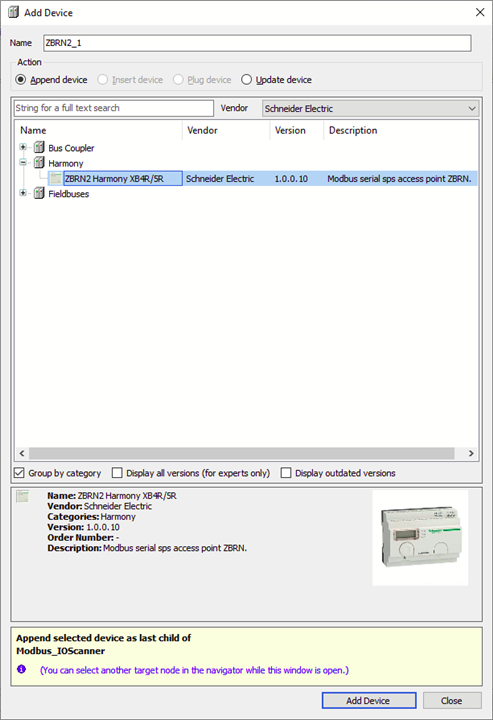In order to extend the capabilities of the Schneider Electric industrial architecture I added the Harmony Hub to the project. The Harmony Hub, which is the ZBRN2 version, has a Serial connection using the RS485 standard, consequently, a ModBus IOScanner must be added to address this kind of device. It is important that if the ZBRN1 will be used then one of the ethernet connections should be configured.
| {gallery}Harmony Hub Device |
|---|
|
IMAGE TITLE: Communication Catalog Tree |
|
IMAGE TITLE: Adding a ZBRN2 device |
|
IMAGE TITLE: Architecture Device Tree |
On the other hand, the ZBRN2 device must have the same configuration selected in the project architecture since if any parameter differs the communication will fail. In this case, according to the user guide, I used the RS485 standard without polarization resistor because the architecture is really simple. If your proposal has grown or has a complex architecture, it is recommended to add a termination resistor of 250 ohms (see the manual for more information).

To see the whole process from the button pairing to the latest behavior, I made a video. I hope you find it informative and useful.



